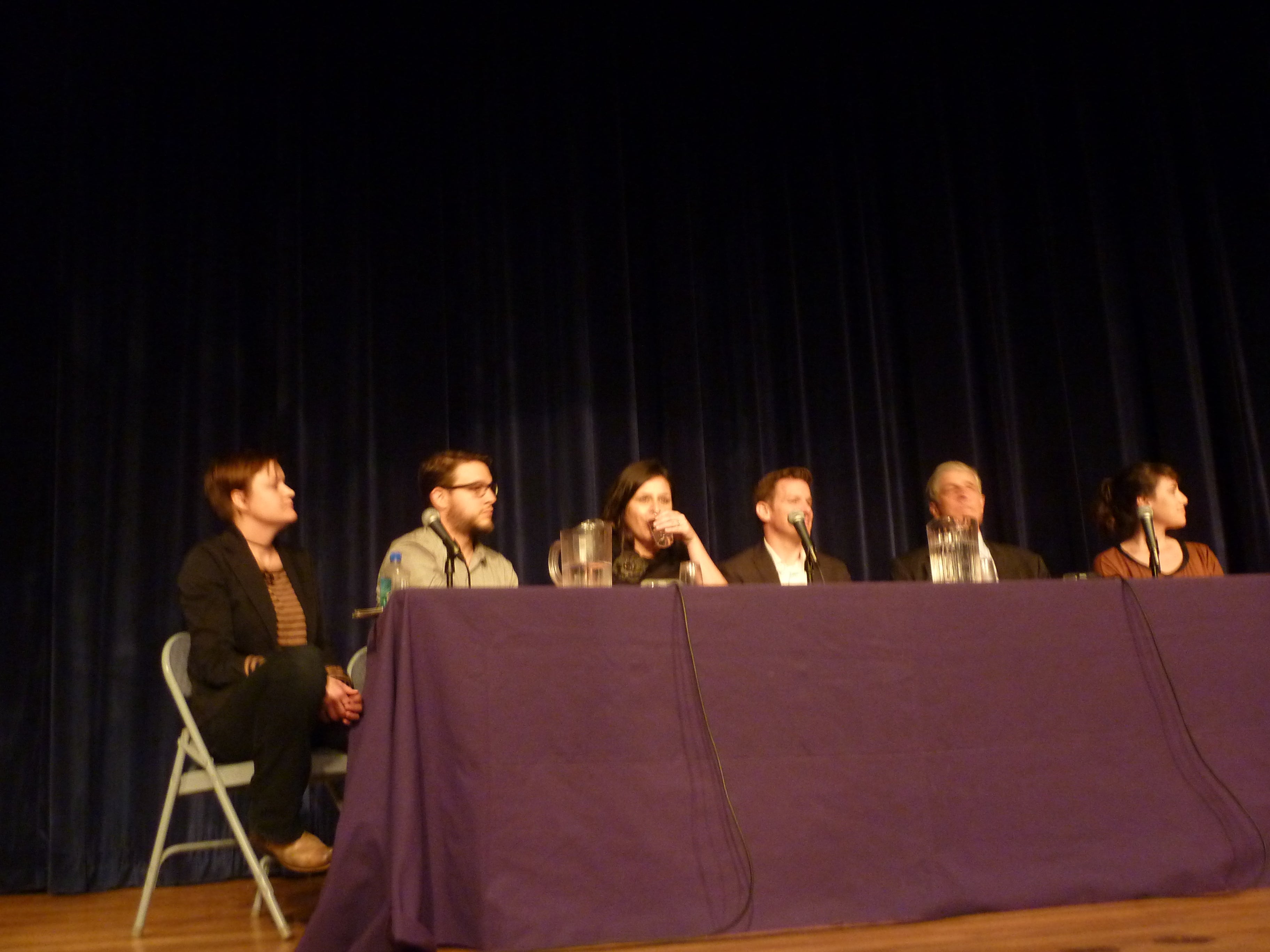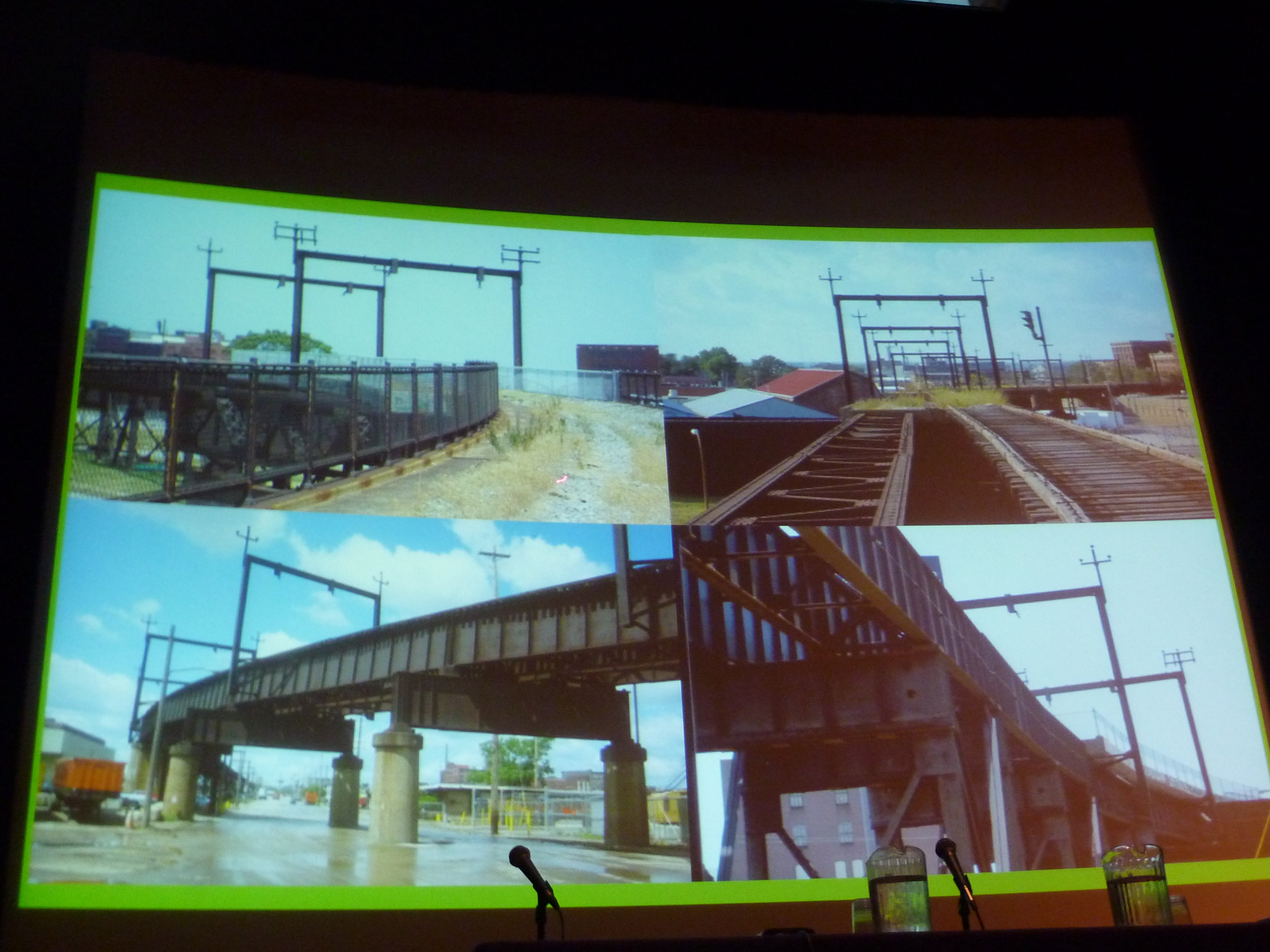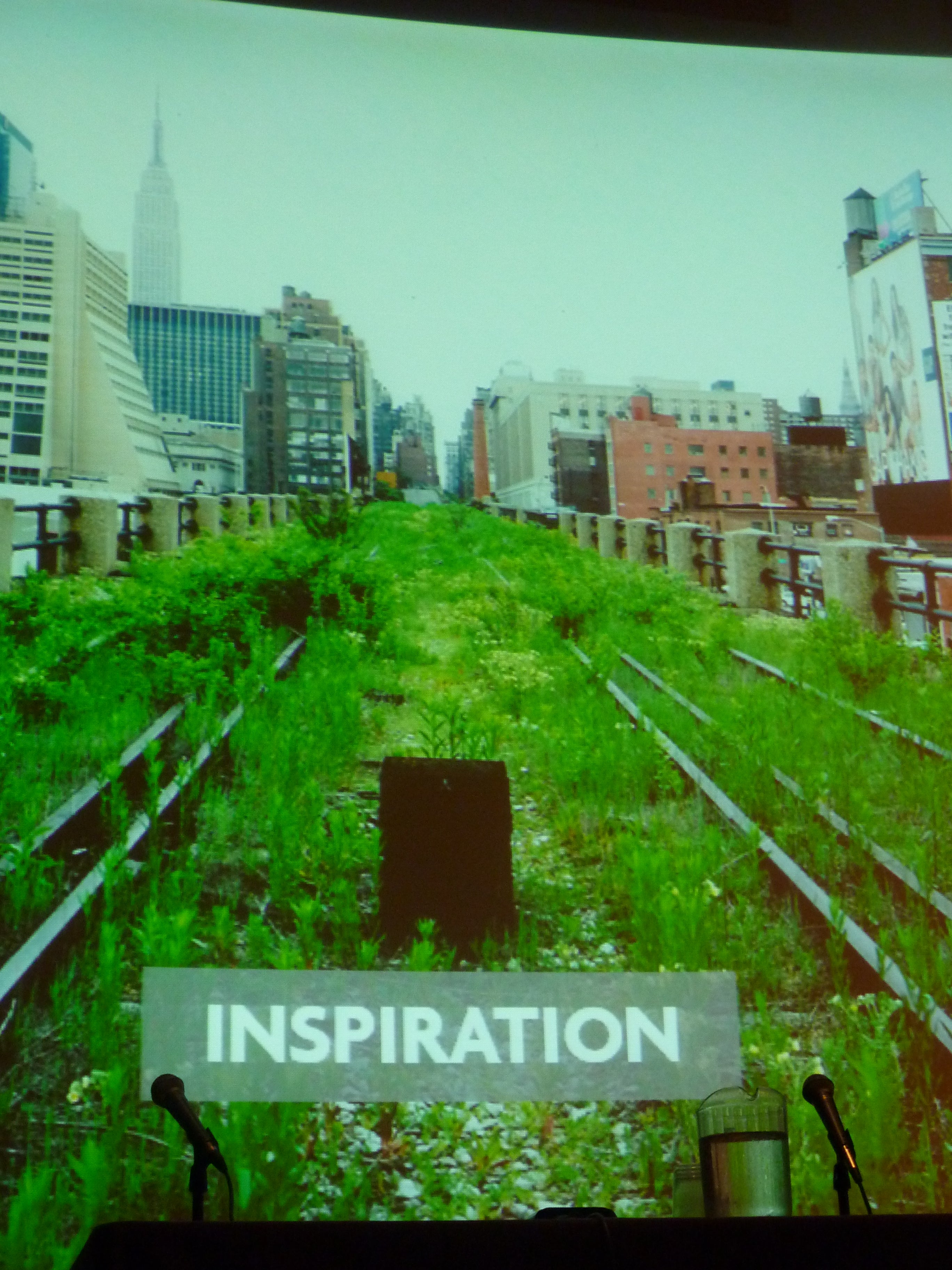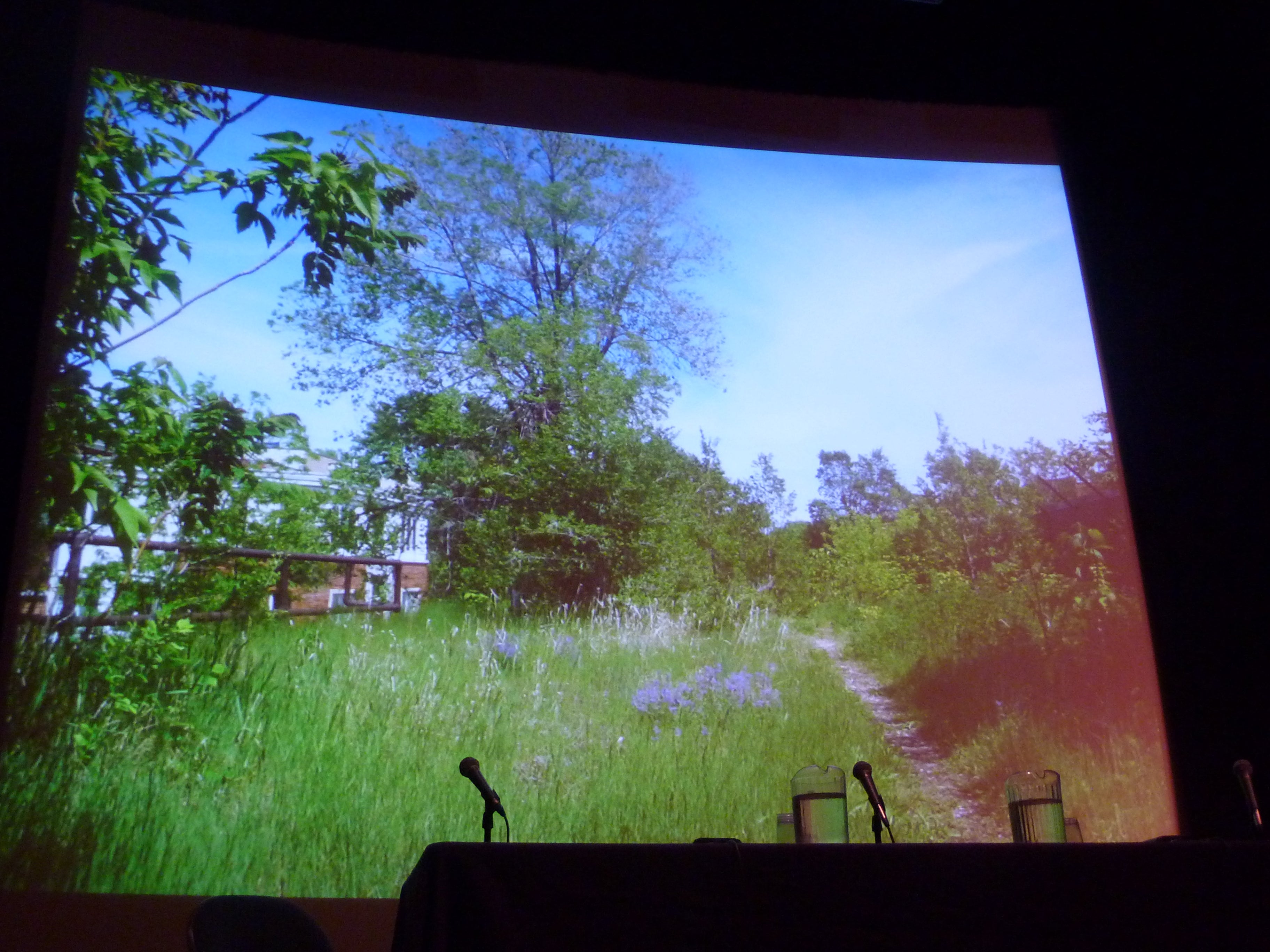Driving home lessons from rails-to-parks conversions
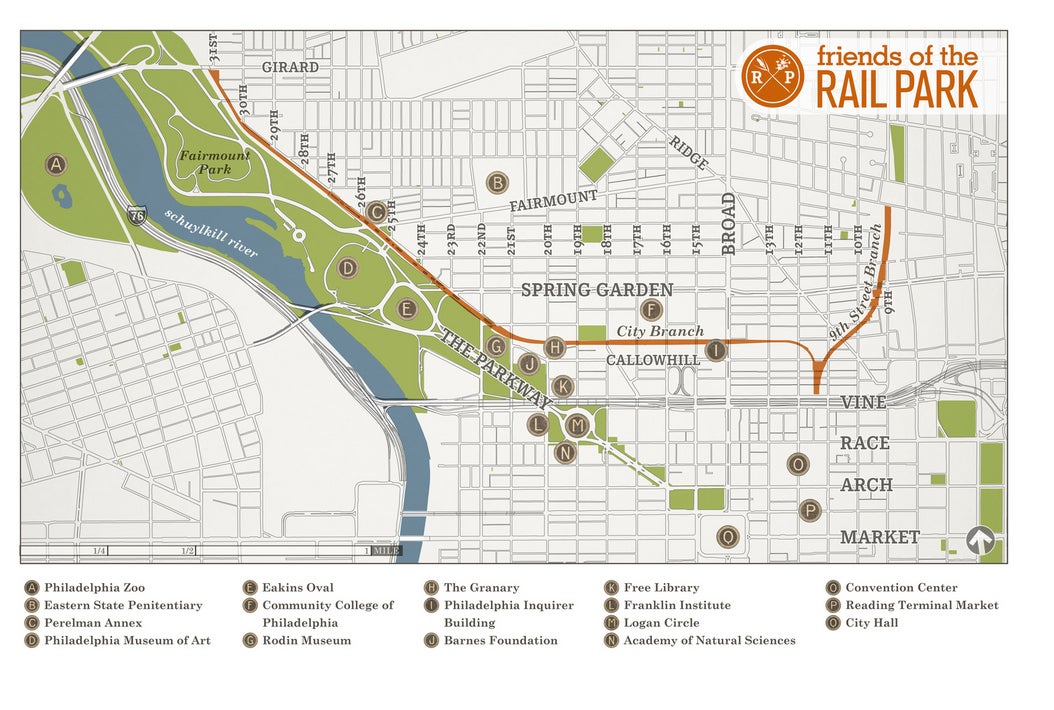
There’s a “growing collection of urban linear parks” in America, Beth White, the Chicago region’s director for the Trust for Public Land (TPL) said Monday night in introducing the panelists for “From Tracks to Parks: The Next Generation of Urban Green” at the Academy of Natural Sciences of Drexel University. The program, presented by Next City and the Academy’s Center for Environmental Policy, offered a look at the similarities and differences of four such parks.
The underlying question: what can Philadelphia learn from the further-along efforts in New York, Chicago, and St. Louis?
Danya Sherman of New York’s Friends of the High Line, was the first speaker. There are, she said, “costs and benefits to being located in Manhattan” — being the first to substantially complete an elevated park and to do so in such a visible city “opened us to a lot of praise and a lot of critical feedback,” she elaborated.
Sherman presented a brief recap of the now familiar story of how two inexperienced neighbors conceived of the project in 1999 after the deteriorating elevated rail line was targeted for demolition.
She credited the park’s rapid development and tremendous success — its founders intially imagined some 300,000 annual visitors; last year more than 4.5 million walked its paths — to several factors, including inspired leadership, passionate coalitions (and opposition), community input, a dedication to brand- and buzz-building, and a strong design identity.
Building an economic case, too, had proven important, she said. In their pitches, advocates pointed to the impact of other new parks and certainly this one has lived up to its promise, presenting about $2 billion in economic impact and resulting in 29 major development projects. Sherman pointed out that the already-rich aren’t the only ones to have benefited: the Friends have created several teen stewardship programs oriented toward residents of the two public housing developments nearby.
Next up, Jamie Simone, program director for the urban parks program at the Chicago office of the Trust for Public Land, and Ben Helphand, co-founder and board president of the Friends of the Bloomingdale Trail, talked about their efforts to create an elevated park about four miles northwest of Chicago’s Loop. The rail line in question spans four neighborhoods but serves more as a barrier than a connector, noted Simone. Like the High Line and the other rails discussed at the event, it had its roots as a street-level railroad which was later razed — in 1913 — for safety reasons.
When Helphand first trespassed it, he said, he was greeted by a lush green carpet of prairie grasses and flowers and a desire path that indicated that many others had already discovered its wonders. In fact, Helphand said, a Chicago runners association has named it one of the best places for a jog — even though it is currently not open to the public.
Because there are 22 schools near the trail and the neighborhoods are severely under-parked, the Friends’ proposals have not run into any opposition, said Helphand. “We didn’t have to fight some of the battles faced by the High Line,” he observed. “Instead we’ve focused on keeping the pressure” to get the park developed.
The Bloomingdale Trail is now in its second phase, with a finalized design in place, construction to begin by the end of July, and completion set for Fall 2014. Already a small park, created to serve as an inital access point, is operating, cut out of a parcel of land that TPL purchased and donated to the Friends’.
As did the others, Todd Antoine, deputy director of planning for the Great Rivers Greenway District in St. Louis, emphasized the potential of the city’s planned elevated park, The Trestle, to serve as a connector, in this case to the region’s system of trails in one direction and to the Mississippi River in the other.
Antoine illustrated that the park passes through several disparate neighborhoods, none of which are densely populated but all of which contain vestiges of the city’s industrial past and fortuitious position as a transportation locus in the middle of the country and on a major waterway. Along the trail, then, one can find a still-working port, a variety of light industrial uses, a wholesale produce distribution center, and a metal recycling facility.
The group has been working on design and visioning questions since 2006, Antoine said, pointing out that the park will have a heavy educational/informational component concerning the uses surrounding it. Design-wise, he said, “I’ve always been envious of the High Line and Bloomingdale Trail for its natural vegetation.” By contrast, The Trestle, will be more actively recreational, with planting beds and the like having to be created from scratch.
Finally, it was Philadelphia’s turn. Paul Levy of the Center City District presented a familiar look at the Reading Viaduct and its Septa spur offshoot, indicating that the latter made a perfect quick-start effort with a small footprint and a relatively affordable budget of $8 million. Leah Murphy of the Friends of the Rail Park (formerly Viaduct Green) offered a presentation on efforts to fashion a submerged park from the rest of the westward extension of the City branch of the railroad.
In response to general questions, the panelists then addressed issues of political buy-in and economic feasibility. Antoine mentioned that he had brought the St. Louis mayor east to walk the High Line, while Levy said that while the New York park offered “proof of concept,” it had also upped the stakes for everyone and made it more difficult to negotiate with property owners like Reading Entertainment, owners of the 9th Street end of Philly’s viaduct.
“Basically, everyone else had it easy,” Murphy quipped, when representatives from the other three cities conceded that they hadn’t had problems as far as land acquisition.
WHYY is your source for fact-based, in-depth journalism and information. As a nonprofit organization, we rely on financial support from readers like you. Please give today.



